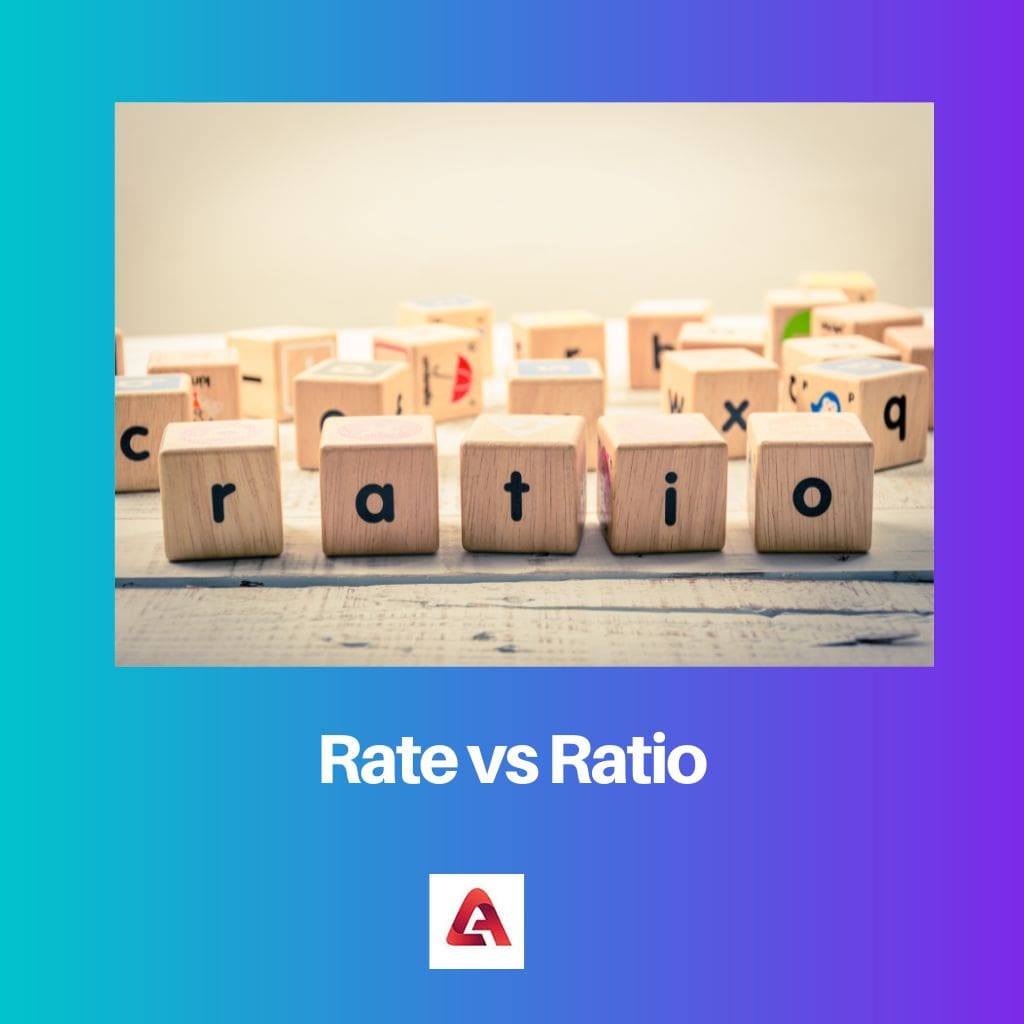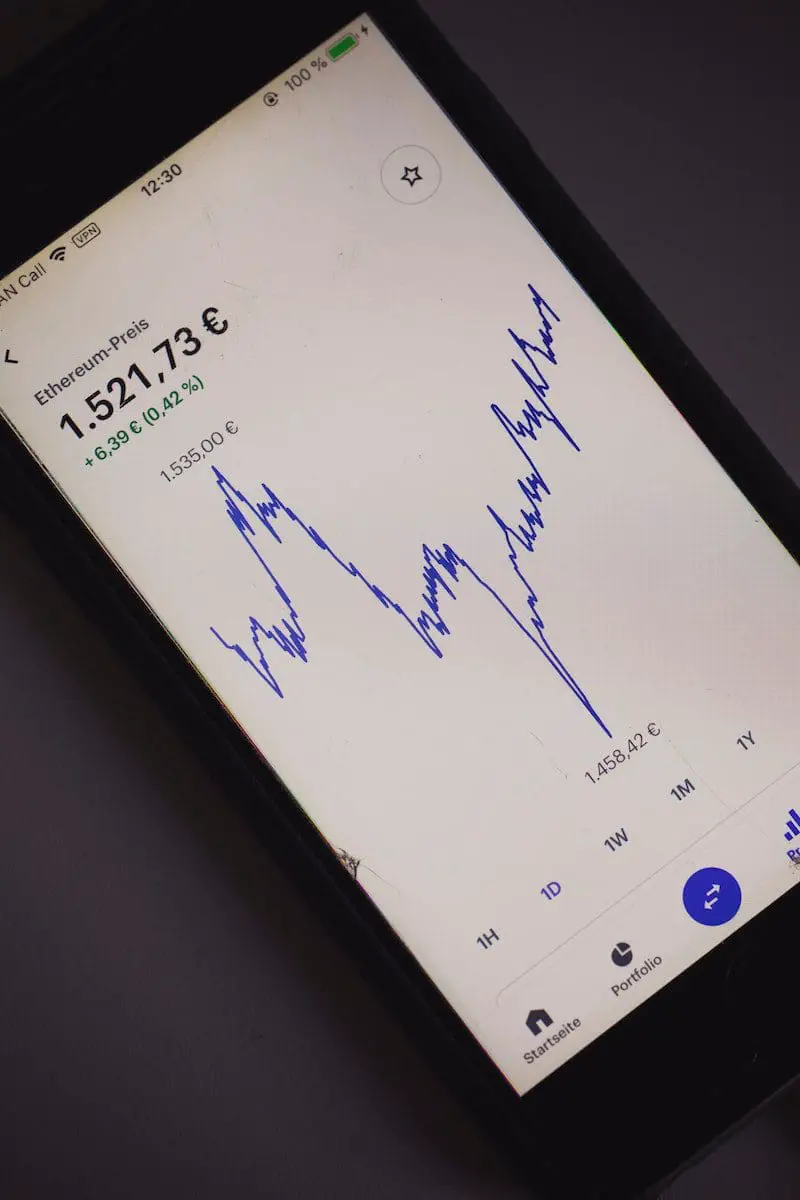A Ratio Is A Rate
In the world of Physics as well as the world in general both rate and ratio are very of import tools that are used to empathise various quantifiable quantities that are present in nature.
Information technology is with the help of these mathematical tools that we are able to understand how various things happen and how they operate around us. The terms charge per unit and ratio are mainly used in the fields of physics, mathematics, finance, business concern, etc.
Both of these terms are very simple to understand, but since they used the aforementioned mathematical function, that is division, to exist calculated, hence it is understandable that at that place might be some confusion between these ii terms.
Rate vs Ratio
The main difference between rate and ratio is that rate can have more than one blazon of quantity while ratio has only a single type of quantity, and hence it is dimensionless.

Rate is the corporeality by which a unmarried quantity changes with respect to one or more other quantities. 1 is usually familiar with the term charge per unit of change of a quantity with respect to another quantity.
Ratio tells us about the human relationship of how quantity varies when another quantity varies at the same time. However, it is important to notation that both the quantities used in a ratio belong to the aforementioned unit.
Comparison Tabular array between Rate and Ratio
| Parameters of Comparision | Charge per unit | Ratio |
| Definition | Rate defines the amount of change of 1 quantity with respect to some other quantity. | Ratio tells the states near the human relationship betwixt two quantities. |
| Dimension | Rate has a dimension of one or more. | Ratio is dimensionless. |
| Dependency | Usually, the numerator is dependent on the denominator. | Usually, both are mutually dependent. |
| Use | Charge per unit is more often than not used in science and finance. | Ratio is mostly used in scientific discipline and mathematics. |
| Variation | The numerator usually varies while the denominator has a unit value. | Both the numerator and the denominator change if either of them alters the value. |
What is Rate?
Rate is the corporeality past which a single quantity changes with respect to i or more other quantities. One is ordinarily familiar with the term rate of change of a quantity with respect to another quantity.
And then basically read tells the states how often or how oftentimes does the value of a unmarried quantity change while the other quantities stay stock-still at a certain value. Normally, the quantity of the denominator is equal to one and so that any alter which occurs in the numerator tin be hands analyzed or calculated.
The near mutual forms of rate which nosotros utilise in our day to day life include that of speed, dispatch, toll of vegetables, etc. When we say that a automobile is moving at a hundred kilometers per hour (100 km/hour) we mean to say that the car covers a distance of hundred kilometers every unmarried hour.
This is an example of a rate, which shows the change of distance with respect to time. Some other such instance is the cost of vegetables. Suppose nosotros say that a dozen bananas cost 30 rupees.
This is an case of a charge per unit because for every dozen bananas the price is xxx rupees. One very important characteristic to annotation about rate is that rate will e'er have one or more dimensions.
This is because the units in the numerator and denominator denote unlike quantities hence and division they practise not cancel each other out, which is why the final quantity which is created by the date has some kind of dimension.

What is Ratio?
Ratio tells the states about the relationship of how quantity varies when some other quantity varies at the aforementioned time. However, it is important to annotation that both the quantities used in a ratio belong to the aforementioned unit.
While studying in schoolhouse people are most familiar with the term ratio used in the subject of mathematics, and the definition of this term remain the aforementioned across all subjects.
Ratios are used in diverse subjects for diverse purposes, whether information technology is in mathematics to calculate the circumference of a circle, or whether information technology is in science to summate the molarity of a solution, or anywhere else.
It is important to notation that, in a ratio, the numerator or the denominator demand not necessarily be a unit quantity. Withal, both the numerator and denominator should exist reduced as much as possible. This means that there should be no common cistron between the denominator and numerator.
Ratio was also useful to analyse demographics. I of the most common ratios used as a demographic tool is the sex activity ratio of a land. The sex ratio tells the states about the number of women in a country per thousand men.
In special cases similar these where either the numerator the denominator is specified 1 need not reduce these terms to the everyman possible value. The values in a ratio follow a proportion, and if one increases the other increases proportionately.
Similarly if 1 decreases the other decreases proportionately too.

Primary Differences Between Rate and Ratio
- The chief difference betwixt rate and ratio is that charge per unit shows the amount of change undergone by a quantity with respect to some other quantity, while ratio tells united states how two quantities are related quantitatively.
- Charge per unit has a dimension of one or more than one, while ratio is dimensionless.
- In charge per unit often the numerator depends on the denominator, while in ratio both, the numerator and the denominator are mutually dependent.
- Charge per unit is mostly used for science and finance, while ratio is mostly used for science and mathematics.
- In charge per unit the numerator usually varies while the denominator has a unit value, while in ratio both of these values vary at the aforementioned fourth dimension.
Conclusion
Tools such equally rate and ratio are important in understanding the physical world around u.s.. They are also important for assay purposes like that in finance, business, surveys, etc.
One very convenient thing about them is that they accept a simple mathematical formula and easily calculated. Understanding and interpreting charge per unit and ratio tin can aid simplify things such every bit a presentation and go more informative and interesting.
References
- https://link.springer.com/article/10.1023/A:1022318321416
- https://journals.sagepub.com/doi/abs/10.1177/0956797615617799
Search for "Ask Any Difference" on Google. Rate this post!
A Ratio Is A Rate,
Source: https://askanydifference.com/difference-between-rate-and-ratio/
Posted by: hunterpubleausing.blogspot.com


0 Response to "A Ratio Is A Rate"
Post a Comment